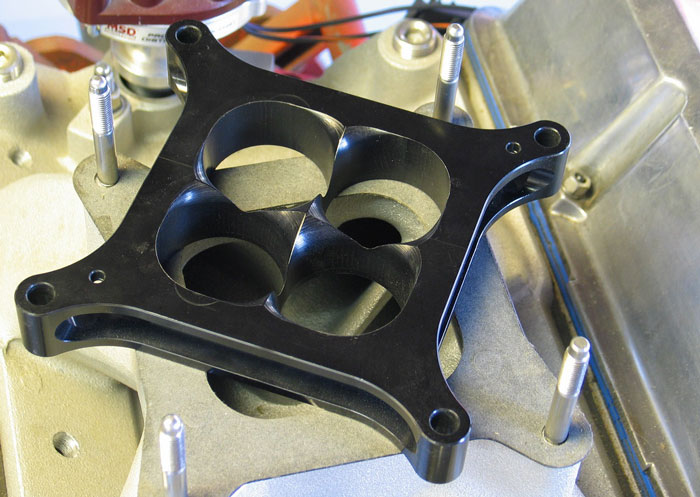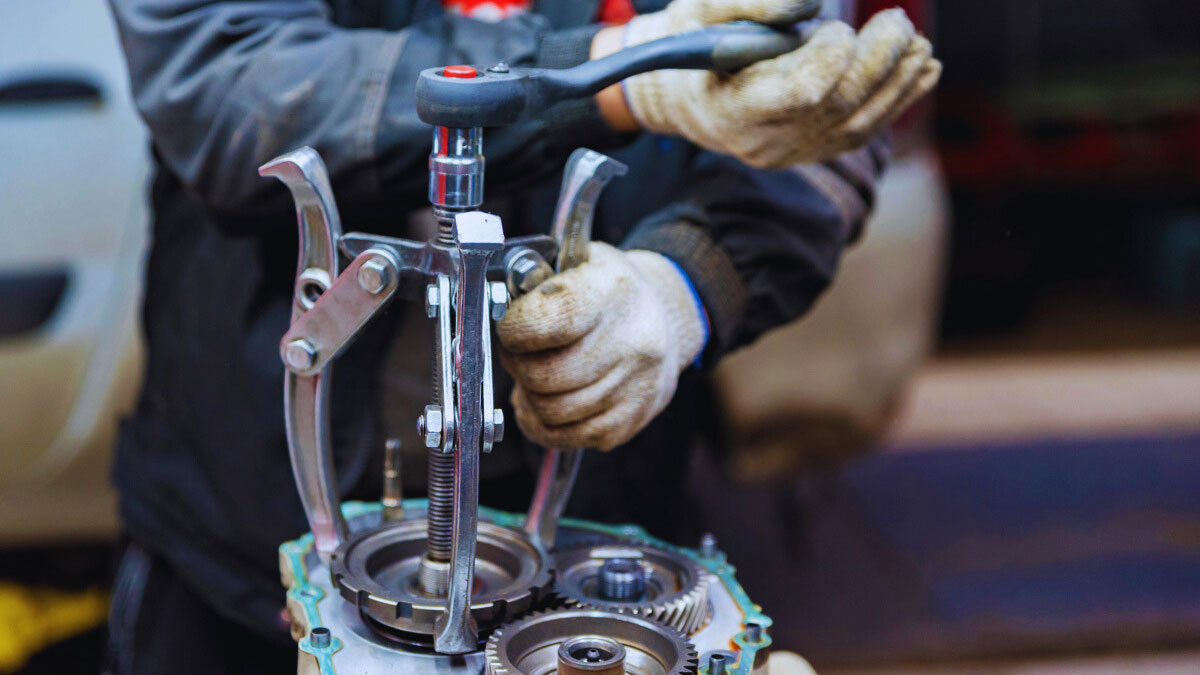When it comes to getting the most out of your vehicle, low-end torque makes a world of difference. It’s that initial surge of power that gets you moving quickly from a standstill and makes driving more enjoyable. But many drivers overlook how to enhance this crucial aspect of their engine’s performance.
I’ve spent years tinkering with cars and discovering ways to boost low-end torque without very costly. In this text, I’ll share four simple tricks that can help you feel that powerful pull every time you hit the gas. Whether you’re a seasoned gearhead or just getting started, these tips will give you a noticeable boost in performance.
Understanding Low End Torque
Low-end torque is crucial for enhancing a vehicle’s performance at lower RPMs. This force, responsible for the immediate responsiveness when accelerating from a stop, plays a significant role in everyday driving conditions.
Torque: The rotational force applied to an object, causing it to rotate. In vehicles, it’s measured in pound-feet (lb-ft).
Low End Torque: The amount of torque available at the lower range of the engine’s RPM band (typically 1,000-3,000 RPM).
Enhancing low-end torque improves acceleration and overall driving experience. It’s particularly beneficial in scenarios like city driving, towing, and off-roading.

Why Low-End Torque Matters
- Quick Acceleration: Improves initial throttle response.
- Better Towing: Provides the strength needed for towing heavy loads.
- Fuel Efficiency: Maintains performance without excessive RPMs.
Factors Affecting Low-End Torque
- Engine Displacement: Larger engines generally produce more torque.
- Air Intake System: Efficient air flow ensures better combustion.
- Exhaust System: Reducing backpressure enhances engine efficiency.
- Tuning and ECU Mapping: Optimizing engine settings maximizes torque production.
Techniques for Enhancing Low-End Torque
Optimizing Air Intake
- Cold Air Intakes: Increase oxygen density in the combustion chamber.
- High Flow Filters: Allow more air to enter, improving combustion.
Upgrading Exhaust System
- Headers: Enhance exhaust flow from the engine.
- High-Flow Catalytic Converters: Reduce backpressure and increase exhaust efficiency.
Tuning and ECU Remapping
- Performance Chips: Modify engine parameters for better torque.
- Custom ECU Mapping: Tailors engine settings to specific driving needs.
Managing Engine Components
- Camshaft Selection: Choosing a camshaft with optimal lift and duration can improve low-end torque.
- Fuel Injection System: Ensuring precise fuel delivery enhances combustion efficiency.
- Assess current vehicle performance.
- Identify areas needing improvement in air intake, exhaust, or tuning.
- Carry out upgrades progressively to monitor changes.
- Consult with automotive professionals for advanced modifications.
Boosting low-end torque transforms a vehicle’s performance, making it more responsive and efficient. Whether you’re a novice or a seasoned car enthusiast, understanding and enhancing low-end torque can elevate your driving experience.
Trick 1: Upgrade Your Air Intake System
Improving the air intake system can significantly boost low-end torque. An upgraded air intake system provides the engine with a more efficient airflow, which translates to better performance, especially at lower RPMs.
Benefits of Cold Air Intake
Upgrading to a cold air intake offers several advantages for enhancing low-end torque:
- Enhanced Airflow: Cold air intakes are designed to draw cooler, denser air from outside the engine bay. This cooler air has more oxygen, which improves combustion efficiency.
- Increased Horsepower: By allowing more air into the engine, cold air intakes can lead to a noticeable increase in horsepower and torque at lower RPMs.
- Improved Throttle Response: With a better air supply, the engine responds more quickly when you press the accelerator, providing a smoother driving experience.
- Fuel Efficiency: Enhanced combustion efficiency means the engine can produce the same power with less fuel, leading to better fuel economy.
Installation Tips
When upgrading your air intake system to improve low-end torque, follow these installation tips:
- Choose the Right Kit: Ensure the cold air intake kit fits your vehicle’s make and model. Using a kit meant for a different vehicle can lead to poor performance or damage.
- Gather Tools: You’ll typically need basic hand tools like screwdrivers, pliers, and potentially a socket set. Having these ready makes the installation process faster and easier.
- Follow Instructions: Read the manufacturer’s instructions carefully. Each kit may have specific steps that are crucial for proper installation.
- Replace the Air Filter: Install a new high-flow air filter. It’s an essential component for achieving optimal airflow and maximizes the effectiveness of your new intake system.
- Secure Connections: Ensure all hoses and clamps are securely fastened to avoid any air leaks, which could negate the benefits of the upgrade.
- Check Clearances: Make sure the new intake system doesn’t interfere with other engine components. Proper clearance prevents potential rubbing or damage during operation.
By upgrading your air intake system, you can effectively increase your vehicle’s low-end torque, eventually enhancing overall performance.
Trick 2: Optimize Your Exhaust System
Optimizing the exhaust system is essential for boosting low-end torque. An effective exhaust system enhances the engine’s ability to expel gases, resulting in better performance at lower RPMs.
Importance of Exhaust Headers & Manifolds
Exhaust headers and manifolds play a significant role in improving low-end torque. Headers are designed to direct exhaust gases more efficiently through separate tubes, reducing back pressure and promoting better engine breathing.
Key Benefits:
- Improved Gas Flow: By separating exhaust gases, headers reduce the turbulence that restricts flow, which helps the engine breathe more freely.
- Increased Efficiency: Optimized gas flow leads to more efficient combustion, resulting in better torque at lower RPMs.
- Enhanced Performance: With reduced back pressure, the engine experiences less resistance, leading to a noticeable boost in low-end torque.
Upgrading to high-quality headers can be a straightforward modification. Look for headers made from durable materials like stainless steel to ensure longevity and optimal performance.
Using High-Flow Catalytic Converters
High-flow catalytic converters significantly impact low-end torque by improving exhaust flow. Conventional catalytic converters can be restrictive, leading to higher back pressure, which hampers engine performance.
- Reduced Back Pressure: High-flow converters help smoother exhaust flow, decreasing resistance and enhancing engine performance.
- Better Emission Control: Even though the enhanced flow, these converters effectively reduce harmful emissions, maintaining environmental standards.
- Optimal Engine Performance: By reducing restrictions, high-flow converters enable the engine to produce more torque at lower RPMs.
When choosing a high-flow catalytic converter, ensure it meets your vehicle’s emissions regulations and is compatible with your exhaust system. Installation by a professional can guarantee the best results.
Optimizing the exhaust system, including upgrading headers and catalytic converters, can significantly enhance low-end torque and overall vehicle performance.
Trick 3: Enhanced Engine Tuning
Tuning the engine for better performance significantly increases low-end torque. By optimizing the settings of various engine components, you can extract more power and efficiency.
ECU Tuning for Increased Torque
ECU tuning involves reprogramming the Engine Control Unit to improve the engine’s performance. This method adjusts various parameters to enhance power output and fuel efficiency. I recommend considering the following aspects:
- Fuel Maps: Control the amount of fuel injected into the engine, optimizing the air-fuel ratio.
- Ignition Timing: Adjust when the spark plug fires, enhancing combustion efficiency.
- Boost Control: Modulate turbocharger or supercharger boost levels, improving low-end torque.
Regularly updating your ECU software keeps your engine performing optimally.
Benefits of Performance Chips & Programmers
Performance chips and programmers offer another way to boost engine performance without extensive modifications. These devices redefine the manufacturer-set parameters to maximize torque and power. Here are key benefits:
- Plug-and-Play Installation: Easy to install without specialized tools or expertise.
- Customizable Tunes: Access various pre-set tunes for different driving conditions.
- Real-time Monitoring: Monitor engine parameters to ensure optimal performance.
By investing in high-quality performance chips, you can efficiently increase low-end torque, enhancing overall driving experience.
Trick 4: Forced Induction Techniques
Tapping into forced induction techniques often yields significant improvements in low-end torque for many engines. Let’s explore some key methods.
Superchargers vs. Turbochargers
Superchargers:
- Mounted directly to an engine, driven by a belt connected to the crankshaft.
- Provide immediate power boost, enhancing low-end torque quickly.
- Ideal for performance vehicles needing consistent power across a broad RPM range.
Turbochargers:
- Rely on exhaust gases to spin a turbine, forcing extra air into the engine.
- Generally more efficient than superchargers but may lag at low RPMs (turbo lag).
- Suitable for both high-performance and everyday vehicles seeking efficiency along with power.
Choosing between the two depends on your vehicle’s needs. Superchargers are great for low RPM gains, while turbochargers can offer efficiency and top-end performance.
Installation Considerations
While forced induction can significantly improve low-end torque, careful installation is crucial for optimal performance:
- Compatibility: Ensure the chosen system is compatible with your engine. Not all engines can handle forced induction without modifications.
- Supporting Modifications: Upgrade fuel systems, cooling, and engine internals to handle increased pressure and heat. Ignoring these can lead to engine damage.
- Tuning: Professional tuning ensures the engine makes the most of the forced induction setup. Missteps here can negate performance gains and damage the engine.
- Budget: Factor in installation costs, supporting mods, and tuning. Forced induction isn’t cheap but offers valuable performance returns when done right.
Forced induction offers a potent means of increasing low-end torque, benefiting various driving setups. With the right approach and understanding, you can make the most of these techniques.
Conclusion
Boosting low-end torque can significantly enhance your vehicle’s performance and driving experience. By focusing on key areas like engine displacement air intake systems and exhaust upgrades you can achieve noticeable improvements. Forced induction methods such as superchargers and turbochargers offer powerful solutions but require careful planning and professional tuning. Investing time and resources into these modifications will yield impressive results ensuring your vehicle performs at its best.
Frequently Asked Questions
Do turbos increase low end torque?
Yes, turbos can increase low-end torque by forcing more air into the engine, which improves combustion efficiency. Smaller turbines are often used to lower the boost threshold, enhancing low-end torque.
Does exhaust back pressure increase torque?
Yes, exhaust back pressure contributes to torque production, especially at lower RPMs, by maintaining exhaust gas velocity and aiding in the scavenging effect.
How do I add more torque?
Adding more torque involves increasing the amount of air and fuel burned with each stroke. Upgrades like installing a turbocharger or supercharger can help achieve this by forcing more air into the combustion chamber.
How to increase torque in a small engine?
Common upgrades to increase torque in a small engine include installing a performance camshaft, upgrading the carburetor or fuel injection system, using a high-flow exhaust system, and increasing engine displacement.
How do you maximize motor torque?
To maximize motor torque, ensure all moving parts are well-lubricated and aligned. Using a gearbox can also help increase torque by decreasing input RPM, thereby linearly increasing torque output.

